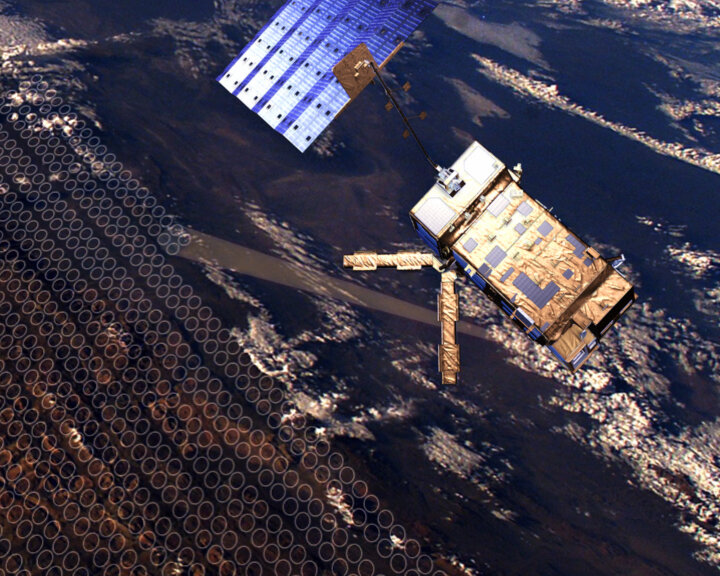Satellite sensor maps global atmospheric ammonia emissions
Using radiation measurements obtained by the MetOp satellite, scientists have produced the first complete map of global ammonia emissions – a pollutant of key environmental concern. The map, based on observations throughout 2008, shows inaccuracies in current ammonia inventories and identifies new hotspots.
Ammonia emissions contribute to a host of environmental problems, including soil acidification, reductions in biodiversity and the formation of atmospheric particulate matter, which has been linked to human health problems such as asthma. Yet despite its importance, many uncertainties remain about its global distribution.
Mapping ammonia is difficult, in part, because once emitted it only remains in the atmosphere for a short period. While in the atmosphere, however, it reacts with acid pollutants, such as nitric acid and sulfuric acid, to produce ammonium aerosol, which is believed to influence climate.
Lieven Clarisse and Pierre Coheur from the University of Bruxelles, Cathy Clerbaux from the French Scientific Research Centre (CNRS) and colleagues developed a methodology to be used with MetOp’s Infrared Atmospheric Sounding Interferometer (IASI) sensor that could isolate the signature of ammonia.

By comparing the concentration map generated with IASI data obtained over a one-year period, which included more than a million measurements a day, with recent atmospheric models, the team was able to locate inconsistencies and identify ammonia hotspots across the globe.
Most of the hotspots appeared over agricultural regions in Europe, North America and Asia, as expected. However, the measurements taken from space over agricultural valleys, such as Italy’s Po Valley, Uzbekistan’s Fergana Valley and the US’s Snake River Valley in Idaho, were higher than the current inventories. The scientists also identified some sources in Central Asia that had not been included in current inventories.
Areas with biomass burning also had high ammonia emissions. For instance, increased ammonia concentrations were found over regions, such as Africa, Asia and South America, that had experienced a large number of fires.
Atmospheric ammonia is being increasingly recognised as a key pollutant that contributes to several environmental problems. In 1999 the UN Economic Commission for Europe (UNECE) set stringent reduction targets for ammonia to be obtained by 2010. However, reducing ammonia emissions has proved uncertain.

Although more work is needed to detect low-level ammonia emissions from space, the techniques demonstrated by the team are very promising. With fine-tuning, Earth-observing satellites could provide the careful monitoring essential to ensuring these targets are met.
MetOp, launched in 2006, is the first of three meteorological satellites developed under a joint programme being carried out by ESA and the European Meteorological Satellite Organisation (EUMESAT). The IASI sensor was developed by CNES (the French space agency) in cooperation with EUMETSAT.
These new results, published online in Nature Geoscience in June, were obtained as part of a scientific project in response to a Research Announcement of Opportunity for MetOp, organised jointly by ESA and EUMETSAT. The support to scientific research by ongoing ESA programmes is important for developing and testing innovative methods with data from operational missions.















 Germany
Germany
 Austria
Austria
 Belgium
Belgium
 Denmark
Denmark
 Spain
Spain
 Estonia
Estonia
 Finland
Finland
 France
France
 Greece
Greece
 Hungary
Hungary
 Ireland
Ireland
 Italy
Italy
 Luxembourg
Luxembourg
 Norway
Norway
 The Netherlands
The Netherlands
 Poland
Poland
 Portugal
Portugal
 Czechia
Czechia
 Romania
Romania
 United Kingdom
United Kingdom
 Slovenia
Slovenia
 Sweden
Sweden
 Switzerland
Switzerland
































